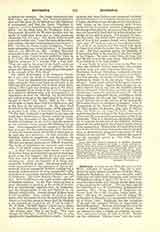

Epiphania, a titular see in Cilicia Secunda, in Asia Minor, suffragan of Anazarbus. This city is mentioned by many ancient geographers, Ptolemy, Pliny, Stephanus Byzantius, etc. It was formerly called Oiniandos and afterwards Epiphania, after Antiochus IV Epiphanes, King of Syria (175-164 B.C.). Cicero once encamped there, and Pompey settled there some of the pirates he had subdued. The city had a special era beginning in A.D. 37 (Barthélemy, Numismatique ancienne, 247). Seven bishops of Epiphania are known, from 325 to 692 (Lequien, Oriens christ., II, 895). The first, St. Amphion, suffered during the persecution of Diocletian and was present at the Council of Nicaea (325). Epiphania was the birthplace of George, the usurping Bishop of Alexandria in the fourth century. Its ruins stand near Piyas, in the sanjak of Djebel-i-Bereket, vilayet of Adana; there are remains of walls, a temple, an acropolis, an aqueduct, and many houses, all built in basalt. Nearby are the celebrated “Cilician Gates” and the battlefield of Issus (Ramsay, Asia Minor, 386; Alishan, Sissouan, Venice, 1899, 475).
Another Epiphania was a suffragan of Damascus. It is the modern Hamah, on the Orontes (about 60,000 inhabitants). Jesuits and native Mariamet sisters care for its Catholic population, who are, for the most part, Greek Melchites. For these and for Catholic Syrians, Hamah is united with Emesa (q.v.).
S. VAILHÉ

